
Objectives of the service
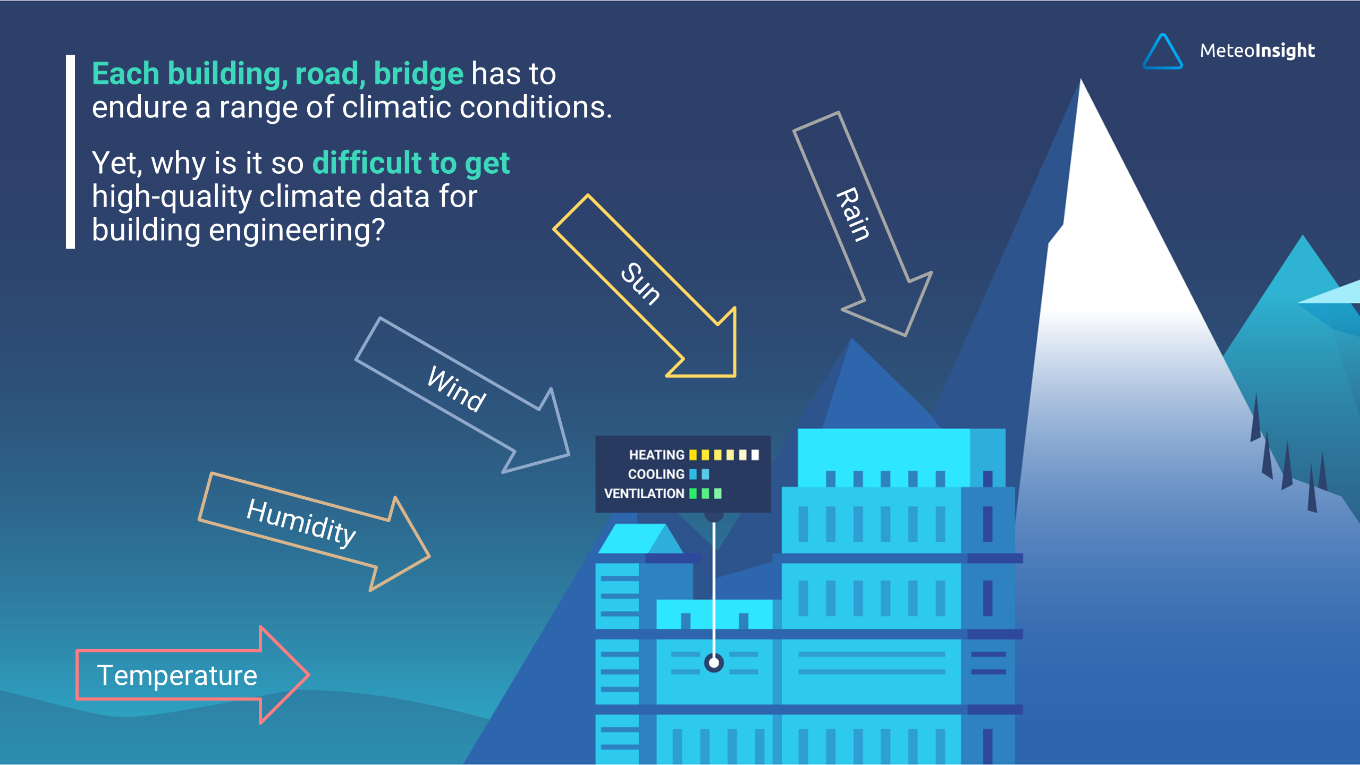
To make existing buildings more environmentally and socially sustainable, we need to know how efficiently they work with energy. Energy auditing is used for this purpose. It determines a building’s energy performance and identifies energy-saving opportunities.
The key component to energy auditing is climate data:
-
Outdoor temperatures are used to assess the energy performance of heating systems;
-
Solar radiation is used to assess the energy performance of photovoltaic systems.
However, available climate data for energy auditing have significant limitations:
-
High-quality climate data are of limited availability – the only available data source is weather stations placed 10s of kilometres away from an audit site;
-
Getting the data usually requires labour intensive process of searching through available data sources, and manually processing the data.
By employing machine learning algorithms to process satellite-enhanced meteorological measurements, MeteoInsight will provide easy access to ready-to-use climate data for any site worldwide.
Users and their needs
The service is beneficial mainly to energy auditors.
These are companies or individuals responsible for assessing the energy performance of a building and proposing options for reducing its energy consumption.
The energy auditors expressed the need for:
-
Improved availability of climate data;
-
More accurate climate data.
A variation of the service is beneficial also to construction companies.
Climatic conditions directly influence the capability of construction workers and machinery to perform their work, for example, concrete can’t be poured in negative temperatures. The climate intelligence, such as a frequency of negative temperature occurrence, can be used to optimize the planning and management of construction projects, reducing the amount of energy, material and manpower needed for the completion of the project. Thus, reducing the building’s carbon footprint.
The construction companies expressed the need for:
-
Reducing construction downtime;
-
Climate data specific to their construction site.
Service/ system concept
Users will be able to access the climate data for any site in any country of their activities.
Getting the data will require only three steps:
-
Select the site on the map,
-
Choose the desired data,
-
Order the data.
Step 2. of the service providing climate data for energy auditing can be seen in the picture here below.
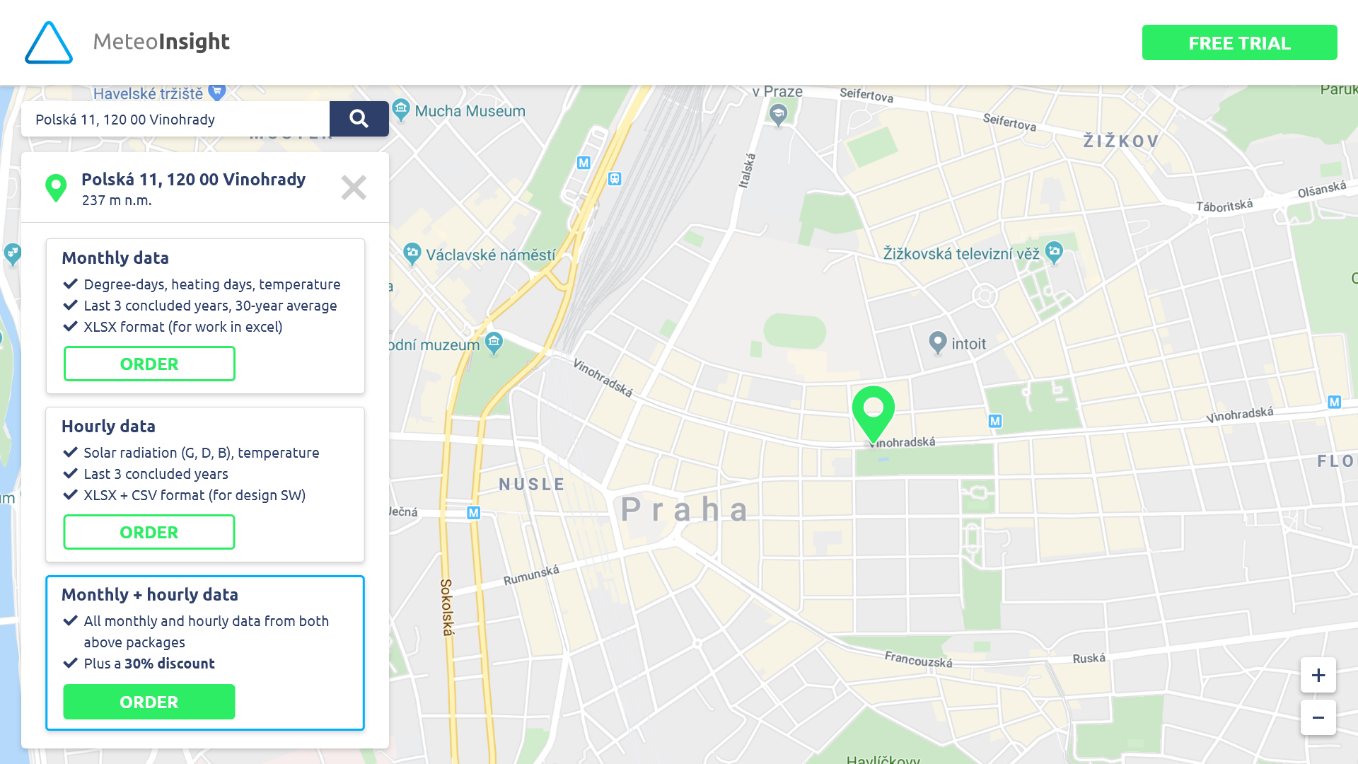
The service will combine the most accurate geographical and meteorological information available with advanced machine learning algorithms to provide users with site-specific climate data.
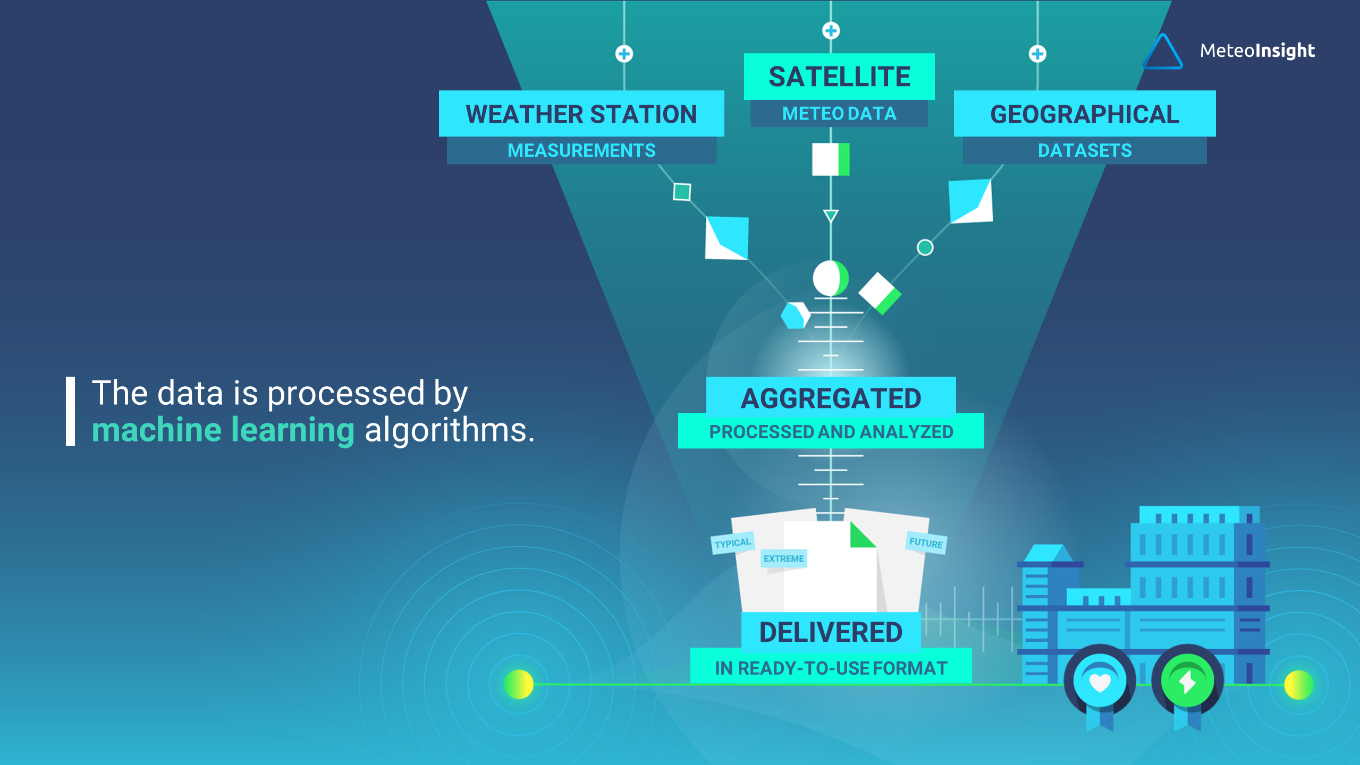
Space Added Value
Practice in the energy engineering & construction industry is to use weather station measurements to create usable climate data. The problem is that the building sites are usually located 10s of kilometres away from the nearest weather station. Climatic conditions on a building site are influenced by the local environment, for example: in densely populated areas of a city, the air temperatures are usually higher due to an Urban Heat Island effect than in a city periphery. Therefore, data even from the nearest weather station yields suboptimal engineering results.
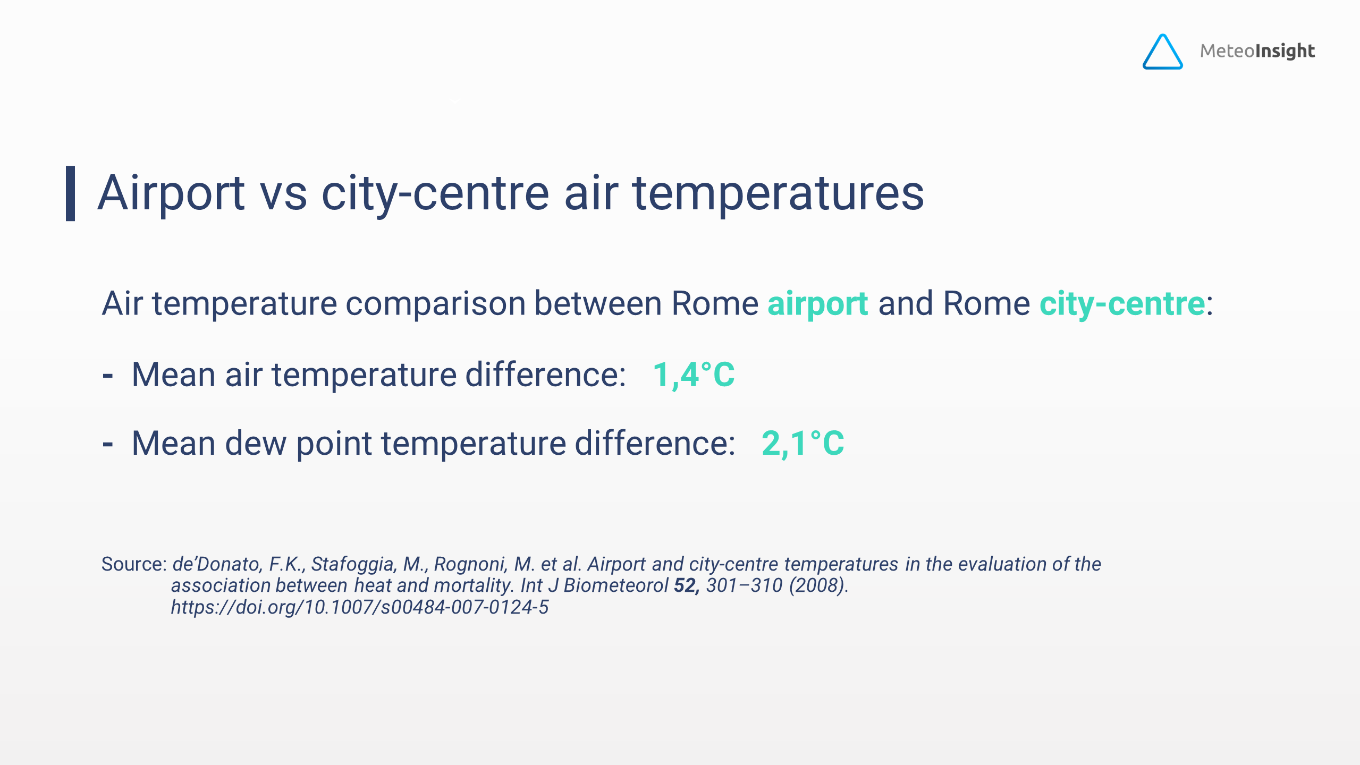
Satellite-enhanced meteorological datasets play a key role in complementing the data of the weather stations. By combining them with weather station measurements and information about the environment local to the building site the service will be capable of extracting climatic profile for the GPS coordinates of any building site, worldwide. This profile will provide an accurate site-specific baseline for the creation of climate data for energy auditing and construction management.
To assess the accuracy of the approach, climatic profiles have been extracted for the locations of more than 2 000 weather stations across Europe and compared against measurements of these stations. Very high accuracy was achieved as shown in the picture here below.
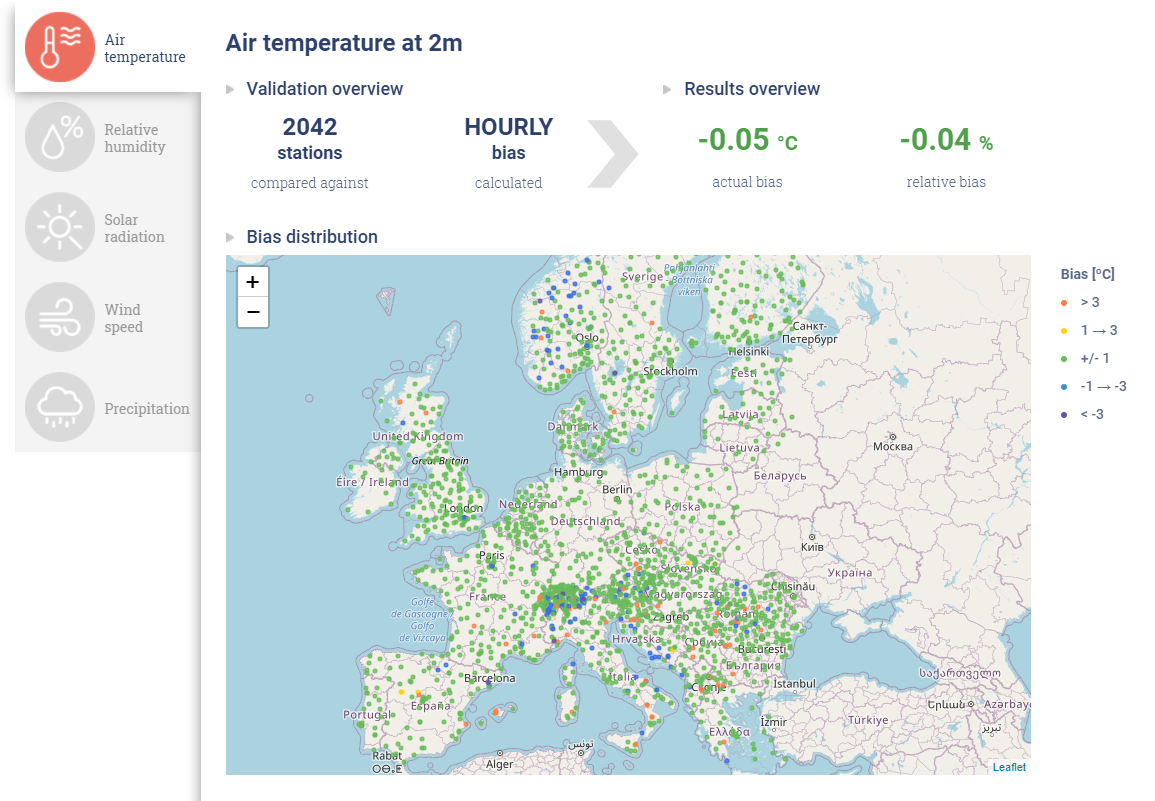
Current Status
Regular discussions with clients and potential users enabled the team to assess their requirements associated with the provision of the climate data. These requirements constituted a baseline for the creation of the service mockups. The proof of concept of the energy auditing and the construction management service was validated:
-
By users for the usability,
-
By the team for technical feasibility and business viability.



